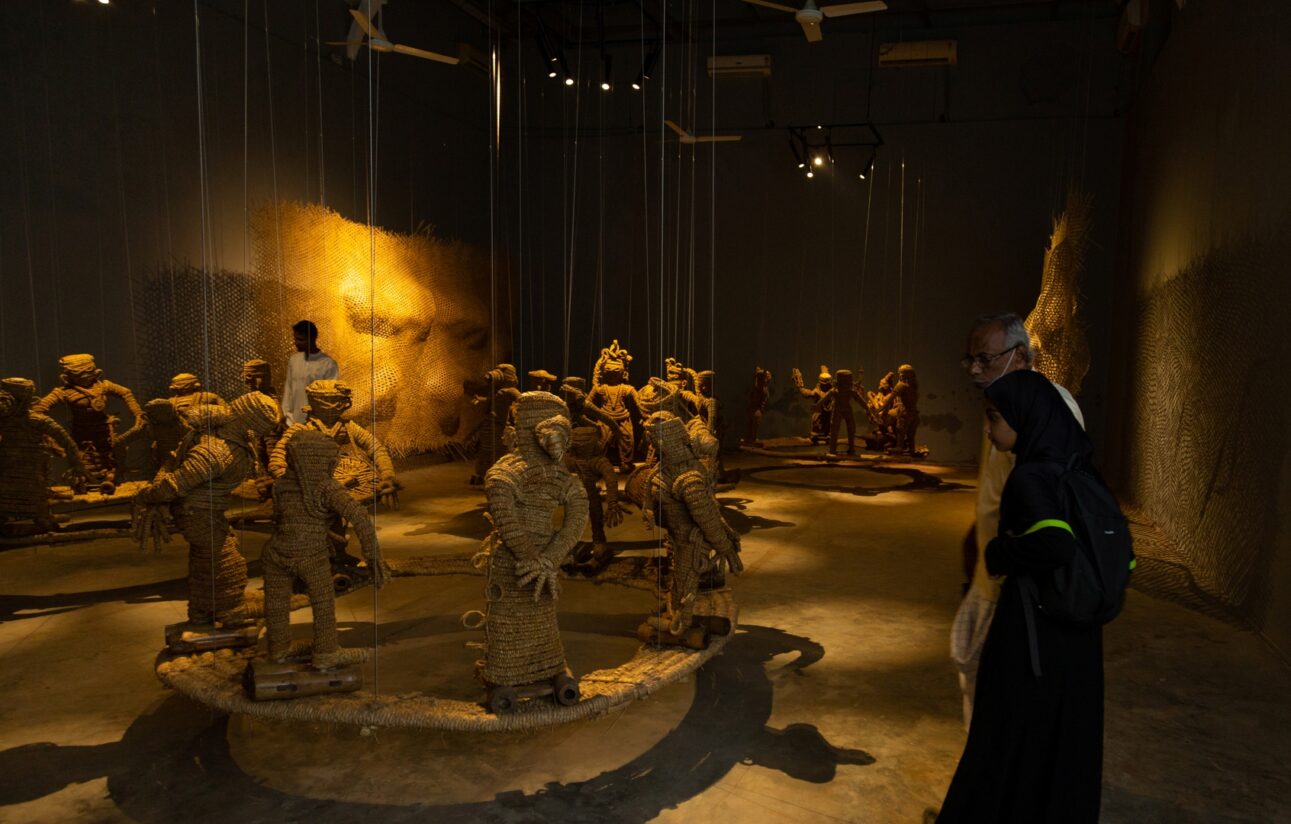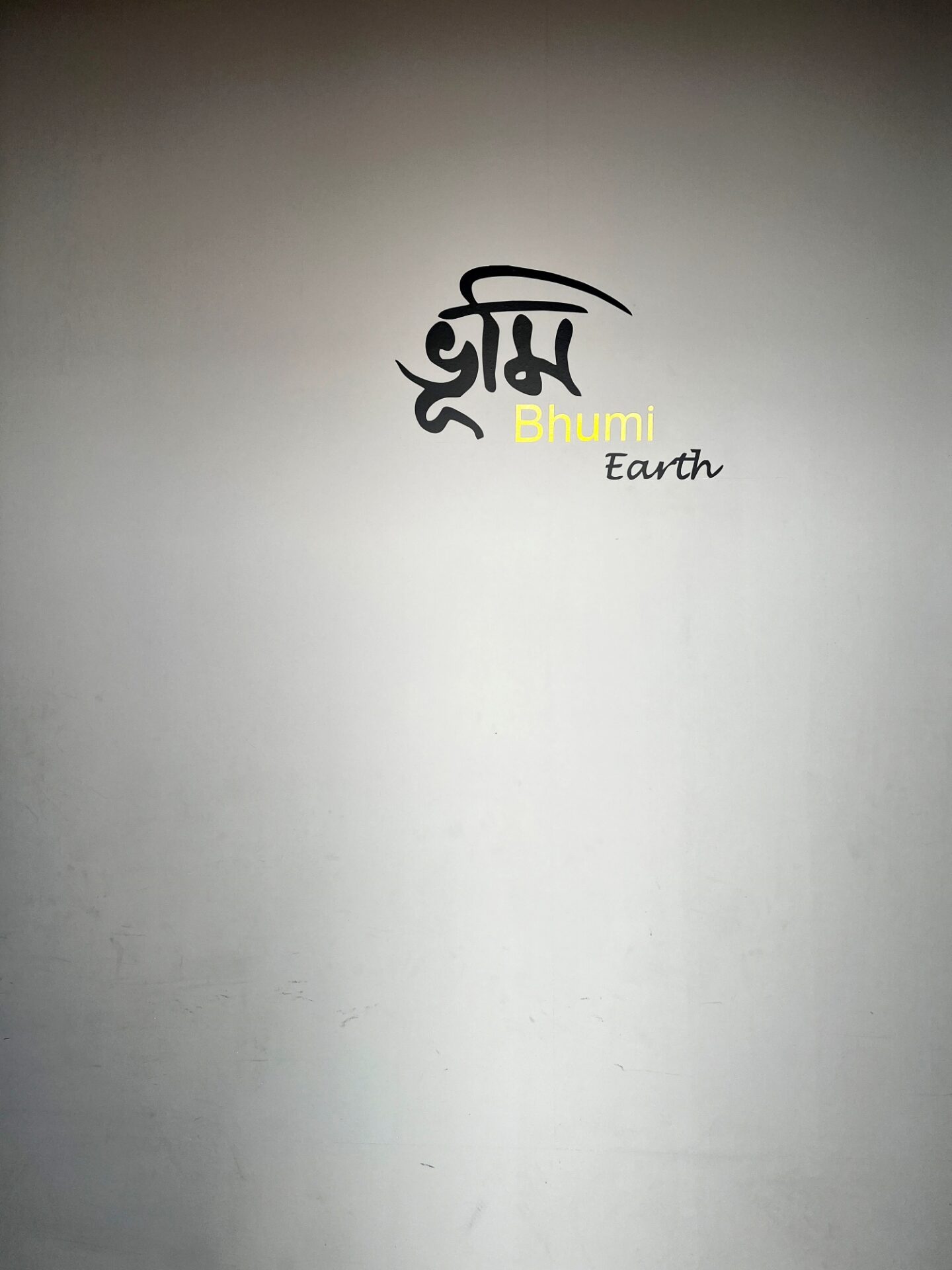Bhumi: A Story of Survival
SCALE puts the spotlight on Bhumi, an Invited Programme at the 5th edition of the Kochi Muziris Biennale, a community project that is rooted in the land honouring solidarity and connectivity during uncertain times. By Deepa Gopal
Bhumi is one of the invited programmes among others in this year’s Kochi Muziris Biennale edition titled ‘In Our Veins Flow Ink and Fire’ curated by Shubigi Rao and presided over by Bose Krishnamachari.
Situated at the TKM Warehouse in Mattancherry is a series of exhibitions that come under the Invitations Programme of Kochi Muziris Biennale. One among them is Bhumi (Earth). The name drew me instantly – the soil and the fields, the mud and its beings, the fragrance of the land… a feeling so consistent with the displaced particularly when one lives in a different city afar from home.
 Founder of Gidree Bawlee Foundation of Arts and Chhobir Haat, Kamruzzaman Shadhin is an acclaimed visual artist from Bangladesh known for installations, video, and performance art who explores social, political, and environmental issues with the support of local and indigenous communities, artisans, and public participation. Along with Shadhin, Salma Jamal Moushum who co-runs Gidree Bawlee Foundation has worked towards materialising Bhumi. Moushum is the research and planning lead whose focus is on the intersections of art and community bringing microhistory to a larger context.
Founder of Gidree Bawlee Foundation of Arts and Chhobir Haat, Kamruzzaman Shadhin is an acclaimed visual artist from Bangladesh known for installations, video, and performance art who explores social, political, and environmental issues with the support of local and indigenous communities, artisans, and public participation. Along with Shadhin, Salma Jamal Moushum who co-runs Gidree Bawlee Foundation has worked towards materialising Bhumi. Moushum is the research and planning lead whose focus is on the intersections of art and community bringing microhistory to a larger context.
 Bhumi as the name suggests refers to every sentient and insentient being that is part of our ecosystem. A community project that took shape in the northwestern region of Bangladesh in collaboration with the Durjoy Bangladesh Foundation and stands for the survival of families that were distraught during the Covid-19 lockdown. The project materialised in four months with 60 families from four villages in Thakurgaon, Balia being one of them from where Shadhin hails, creating beautifully texturised installations exploring the local materials, traditional crafts, agricultural practices, and their inherent connection to the communities. A predominantly agricultural village, everyone in the community is connected to the field and is skillful. Rice, jute, and corn are the main produce of this region. The villagers are all members of the Gidree Bawlee Foundation.
Bhumi as the name suggests refers to every sentient and insentient being that is part of our ecosystem. A community project that took shape in the northwestern region of Bangladesh in collaboration with the Durjoy Bangladesh Foundation and stands for the survival of families that were distraught during the Covid-19 lockdown. The project materialised in four months with 60 families from four villages in Thakurgaon, Balia being one of them from where Shadhin hails, creating beautifully texturised installations exploring the local materials, traditional crafts, agricultural practices, and their inherent connection to the communities. A predominantly agricultural village, everyone in the community is connected to the field and is skillful. Rice, jute, and corn are the main produce of this region. The villagers are all members of the Gidree Bawlee Foundation.
 Expanding on the concepts of connectivity that the word Bhumi entails, the project tried to create an ecosystem of solidarity and connectivity through collective creative efforts during a time when all felt uncertain and distant. The exhibition reviews the spirit of Bhumi that was born out of isolation in a new light in the changing post-Covid times far away from its origins.
Expanding on the concepts of connectivity that the word Bhumi entails, the project tried to create an ecosystem of solidarity and connectivity through collective creative efforts during a time when all felt uncertain and distant. The exhibition reviews the spirit of Bhumi that was born out of isolation in a new light in the changing post-Covid times far away from its origins.
As I walked into the dimly lit, monochromatic space with levitating circular installations and wavy forms on both sides of the walls, one could hear rustic music played internally in our system though there was none. Three jute mats adorn a wall that faces these forms and figures. The four floating figures and forms of Bhumi that are made of rice straw are connected to the community’s history which dates back to the ancient times of the Kings and the Queens to the present day. It speaks about their celebration, their dance and music, their mythology, their lifestyle, their norms and rituals, and the way they are – rooted in Bhumi. The weaved bamboo-mat forms are metaphors of living beings like worms and insects that sustain the ecosystem at a different plane which brings life to agriculture that is inevitable to us, humans. It reminded me of hills and valleys.
 Moushum mentioned that Bhumi had colour when it was first displayed outdoors in Balia but when it reached the grey interior of Kochi, it took a monochromatic turn suited to the space. The outdoor installation included a pond; the pond happens to be imaginary in Kochi as it is left floating in the air.
Moushum mentioned that Bhumi had colour when it was first displayed outdoors in Balia but when it reached the grey interior of Kochi, it took a monochromatic turn suited to the space. The outdoor installation included a pond; the pond happens to be imaginary in Kochi as it is left floating in the air.
‘Gidree bawlee’ in Santali language means baby’s babbling. It means nothing and yet signifies several things. It refers to the growth and development that is essential as well.





